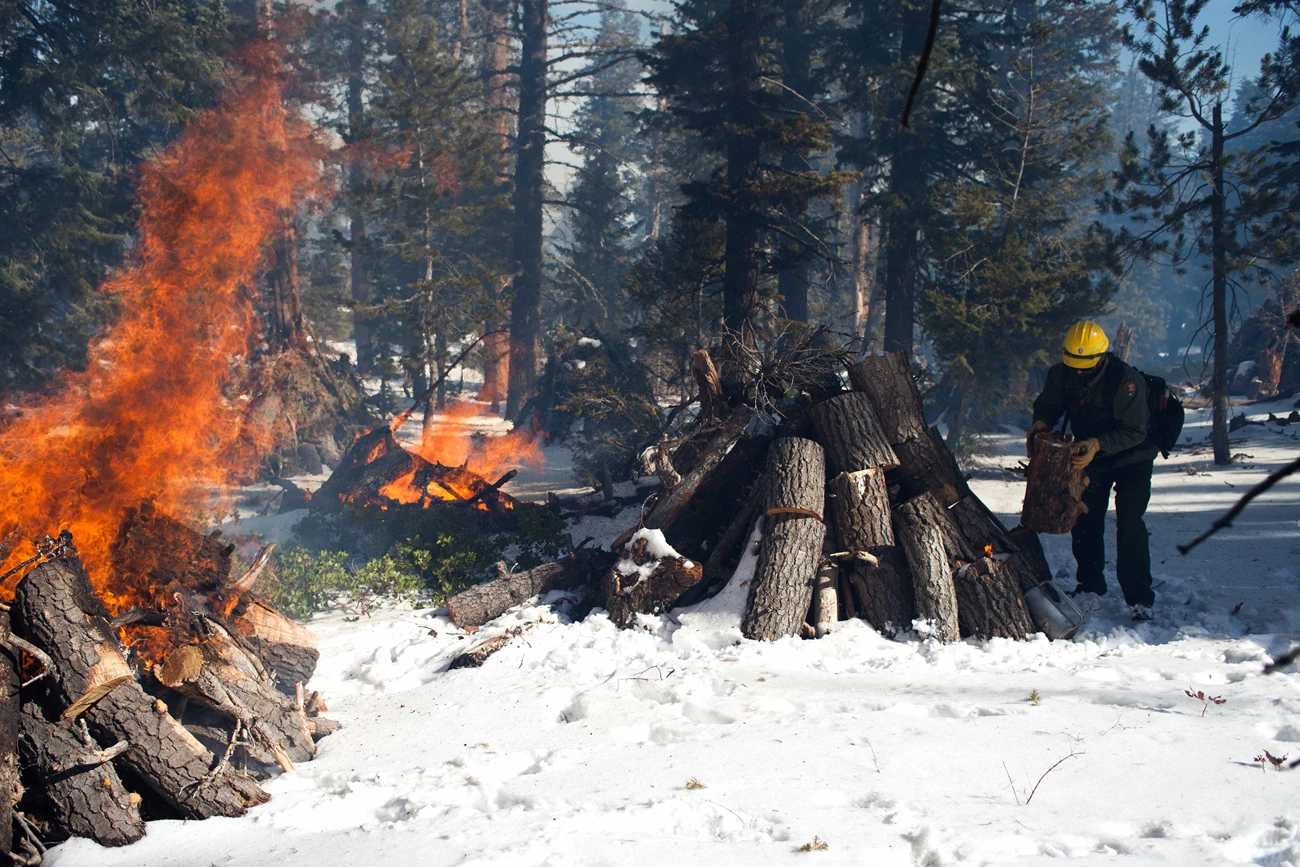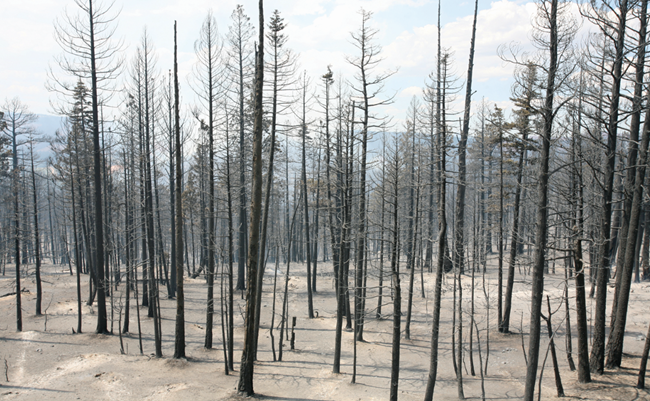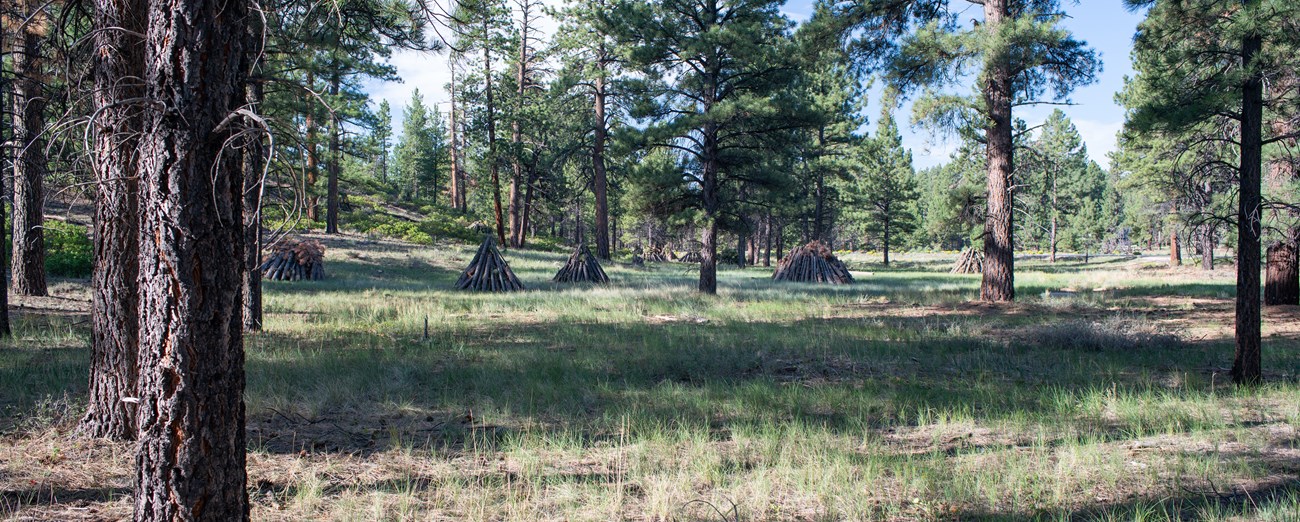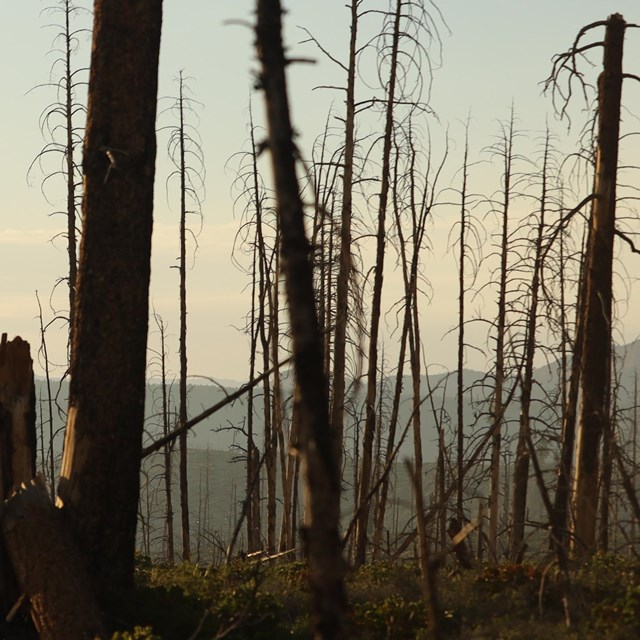
NPS Photo/Peter Densmore Fires are part of a natural process in places like Bryce Canyon, but they can be dangerous in highly visited areas without any form of management. There have been many thoughts on the best way to protect popular places and their visitors from fire over the years. These thoughts have changed as lessons have been learned. Some lessons in fire management can be learned after a single incident. Others took decades. Today we use what we have learned to manage fire by balancing benefits to the ecosystem with protection of people and property. 
Fire Suppression in Bryce CanyonBefore 1911, low-intensity ground fires were common in Bryce Canyon and on the Paunsaugunt Plateau. These ground fires, usually caused by monsoon season’s thunderstorms, would clear the underbrush of small plants and saplings, leaving room and resources for older, mature trees. On average, Bryce Canyon would see one of these fires about every 7-8 years. This changed, however, with the introduction of fire suppression policies in the early 1900s. By the 1970s, fire managers began to realize the consequences of suppressing all fires. 
NPS Photo What We LearnedIn 2009, lightning struck in Bridge Hollow, an area of Dixie National Forest, starting the Bridge Fire. The Bridge Fire was permitted to burn, with the hope that it could help use up extra fire fuel built up during the fire suppression era. Instead, unpredictable weather soon turned it into the largest fire in Bryce Canyon’s history. 
NPS Photo What is a Burn Pile?When you visit Bryce Canyon today, you may see large piles of sticks or logs in a teepee-like shape in various places. Perhaps they are along the road, by one of the trails you are hiking, or even near the campground you are staying at. These structures are burn piles, and they are often constructed in areas that see a lot of people. But why?
Prescribed FiresAlthough fires are natural in ecosystems, it is difficult to allow them to occur without any kind of management – especially in places that are highly visited by the public. This is where prescribed burns are useful. By intentionally setting fires in specific places, fire managers can control the exact location of a fire in an ecosystem. They can also make sure that these fires will not spread too fast and become destructive. Prescribed burns are often used to help thin out forests that have become too dense due to fire suppression, and to restore pre-suppression plant communities. There are many different strategies for implementing a prescribed burn, but the easiest one to see at Bryce Canyon are the same kinds of burn piles that were used to control the Riggs/Lonely Fire. 
Present and FutureFire has played an important role in western forest ecosystems for millions of years. Today, fire managers respond to fires based on how they started. Any human-caused wildland fire will be completely suppressed, but a naturally ignited fire can often be managed instead. As much as possible, Bryce Canyon fire managers aim to reintroduce lightning-caused fires by allowing them to perform their natural, ecological role. By doing so, we hope to watch these fires create diversity in plant communities throughout the park and eliminate heavy fuel accumulation from years of fire suppression. Sound simple? Why Has Fire Management Become More Complex? Over the last 30-40 years, fire management has become more complex. In these decades, wildfires have grown in size, intensity, and frequency. This trend will likely continue in the future, as we face the consequences of fire suppression policy and a changing climate. As more people recreate in national forests and parks, and as more people are building homes closer to wildland areas, today’s wildfires are posing higher risks to human lives. Going forward, fire managers will be challenged with finding ways to help ecosystems and local communities become both welcoming and resilient to natural fires. Visit the Fire Safety page for more information on how to safely build a fire and leave no trace.
Do you live near a wildland area? Learn about the Wildland Urban Interface, and how you can help keep your home safe! 
Color Country Interagency Fire Center Interagency Fire ManagementBryce Canyon National Park is located near land run by other federal land management agencies, including Dixie National Forest and Grand Staircase Escalante National Monument. Fires that start on land managed by one agency can easily spread to land managed by others. As a result, the Bryce Canyon fire crew works locally with the US Forest Service, the Bureau of Land Management, and other state and municipal level agencies (like the Utah Department of Natural Resources) to respond to wildfires and other incidents.
|
Last updated: July 3, 2023



